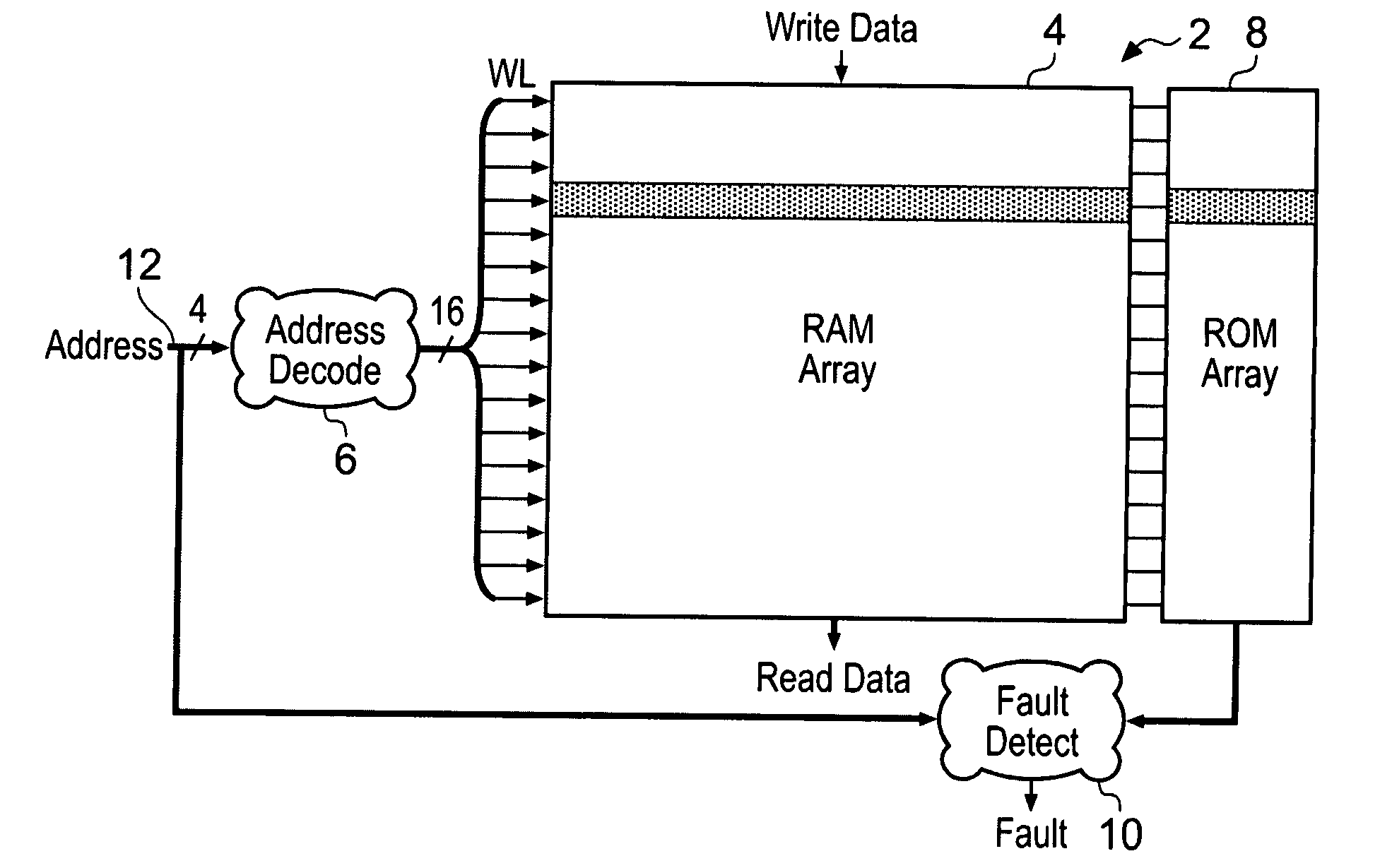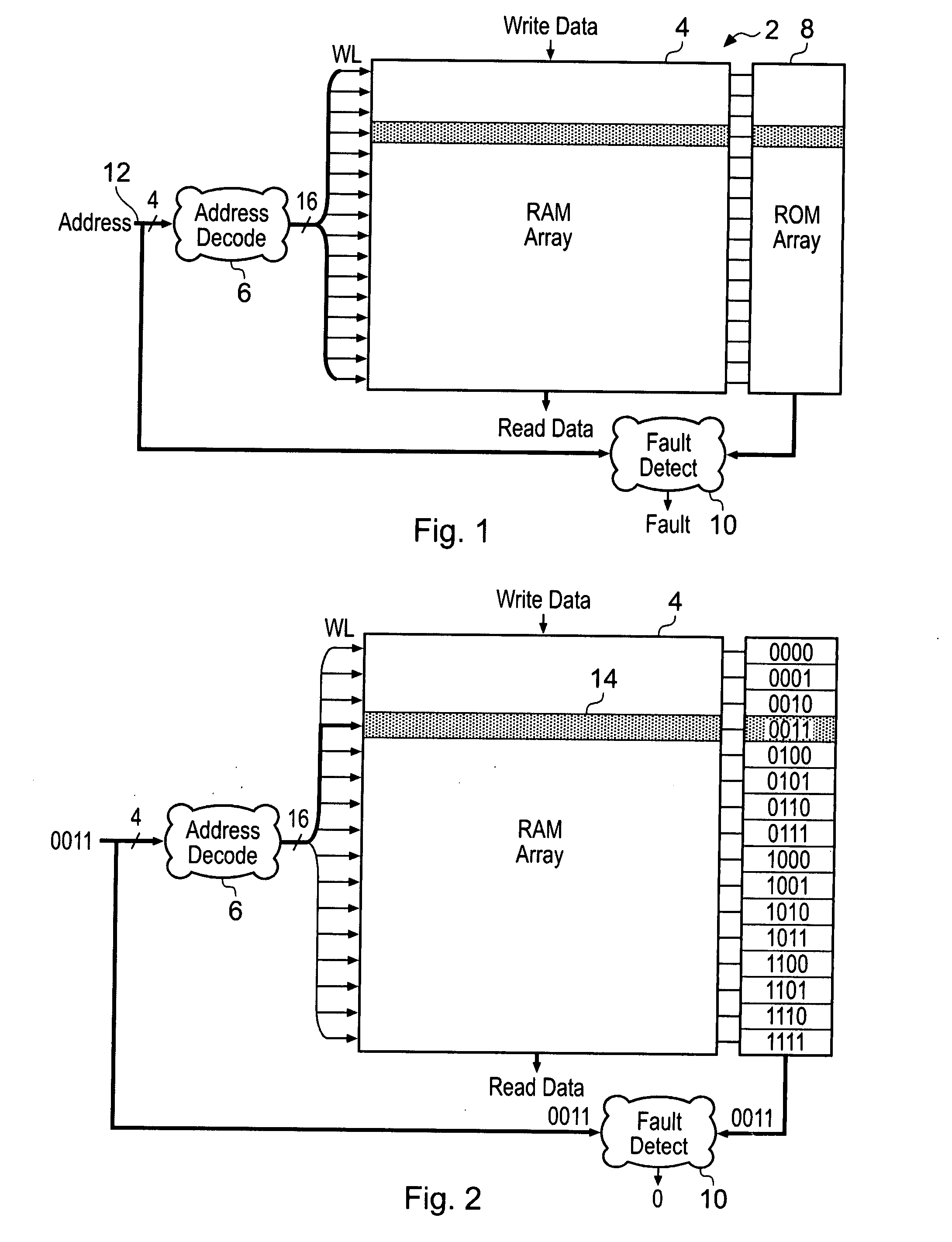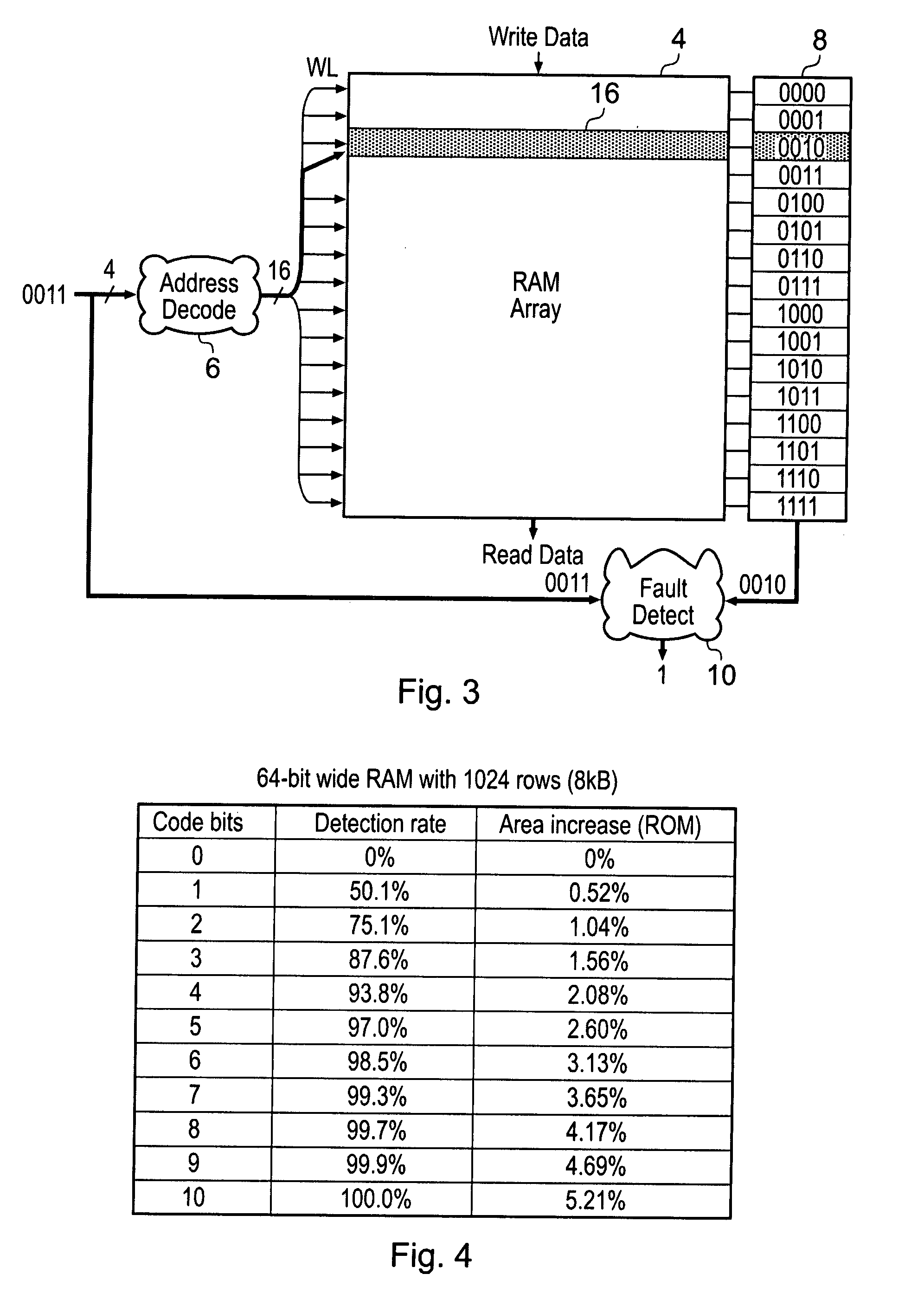Detection of address decoder faults
a decoder and address technology, applied in the field of data processing systems, can solve the problems of increasing the likelihood of the occurrence of soft errors and/or hard errors in such memories, consuming more circuit area of ecc memory, and corrupting the data value concerned, so as to reduce the overhead associated with the operation and reduce the number of bits
- Summary
- Abstract
- Description
- Claims
- Application Information
AI Technical Summary
Benefits of technology
Problems solved by technology
Method used
Image
Examples
Embodiment Construction
[0036]FIG. 1 illustrates a memory 2 comprising an array 4 of memory cells (not illustrated, but can have one of the standard forms of a RAM memory cell), an address decoder 6, a ROM array 8 storing address identifying data and a fault detecting circuitry 10. In operation, an input address is supplied upon address bus 12 and is decoded by the address decoder 6. In this example, the address is a 4-bit address allowing one of 16 different rows of memory cells within the array 4 to be selected by a corresponding word line signal WL. When the addressed row of memory cells is selected, then the data values therein can either be read or written in the standard way depending upon the particular operation being performed.
[0037]Associated with each row of memory cells within the array 4 are 4-bits of address identifying data stored within the ROM array 8. There is one group of 4-bits of address identifying data for each row of memory cells within the array 4. The individual address identifyin...
PUM
 Login to View More
Login to View More Abstract
Description
Claims
Application Information
 Login to View More
Login to View More - R&D
- Intellectual Property
- Life Sciences
- Materials
- Tech Scout
- Unparalleled Data Quality
- Higher Quality Content
- 60% Fewer Hallucinations
Browse by: Latest US Patents, China's latest patents, Technical Efficacy Thesaurus, Application Domain, Technology Topic, Popular Technical Reports.
© 2025 PatSnap. All rights reserved.Legal|Privacy policy|Modern Slavery Act Transparency Statement|Sitemap|About US| Contact US: help@patsnap.com



